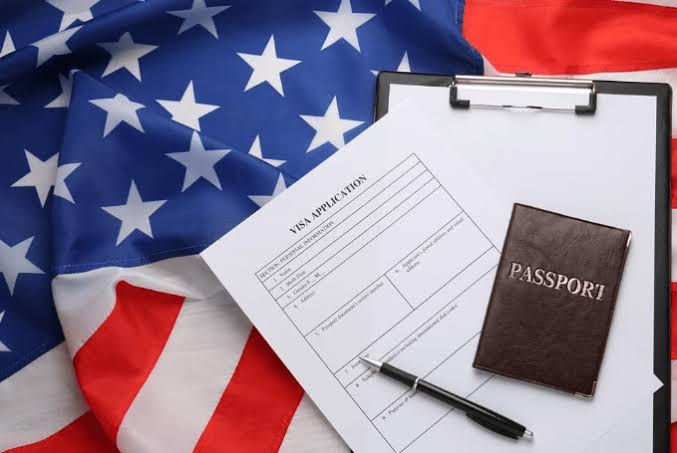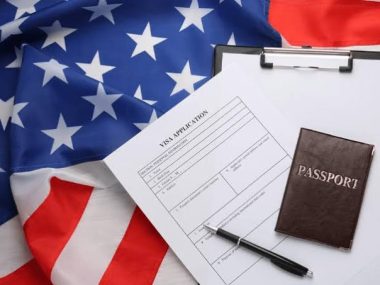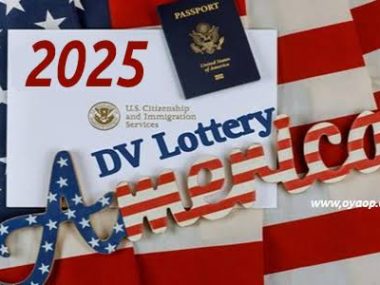H‑1B Wage‑Based Selection: How the U.S. Aims to End the Visa Lottery in 2025
In a move set to reshape the H‑1B programme, the U.S. now plans to replace the long‑standing random lottery with a wage‑based selection system—prioritising higher-paid roles and dramatically affecting eligibility for entry-level applicants and smaller employers.
- What’s Changing and When
0-2On 17 July 2025, the Department of Homeland Security (DHS), via USCIS, submitted a proposal (RIN 1615‑AD01) to the White House Office of Information and Regulatory Affairs. This rule would replace the random visa lottery for cap-subject H‑1B petitions with a weighted selection process based on offered wage .
797-0Selection will follow a four-tier structure based on the Department of Labor’s Occupational Employment Statistics (OES) wage levels. USCIS would begin picking petitions offering Level IV wages and work down through Levels III, II and I .
1069-0The new system is expected to take effect for the Fiscal Year 2027 cap season, but the FY 2026 lottery remains unchanged .
- How the New Selection Mechanism Works
Under the current system, all registrations are subject to a random lottery when demand exceeds the 85,000 annual cap (65,000 regular + 20,000 U.S. advanced-degree category). No priority is given based on wage, location, or experience .
Under the proposed rule:
1571-0Each registration is tied to a single beneficiary—duplicate registrations by multiple employers for the same person are no longer allowed .
USCIS ranks by wage tier, beginning with Level IV—highest prevailing wage—then Levels III, II, and finally I.
Visas are allotted in descending order, subject to random lottery within tiers if there are more petitions than slots.
1778-2If a wage offer falls below OES Level I, it is still categorised as Level I .
- Who Benefits and Who Loses
Winners:
H‑1B applicants in high-wage, experienced roles (likely wage Levels III and IV).
2128-1Employers able to offer premium salary packages—often large tech or finance firms .
2397-0U.S. workers and unions advocating for fairer wage standards in foreign hires .
Losers:
2509-0International graduates and entry-level workers, most of whose wage offers align with Levels I or II. These groups face drastically reduced selection chances .
2733-0Start-ups and small companies, especially those in regions with lower prevailing wages—unable to compete with high-paying offers .
2916-0Universities and nonprofit research bodies, currently exempt from the cap—a status that may end and force them into the same restricted selection pool .
- Timeline and Next Steps
Date Milestone
17 July 2025 3093-1DHS submits proposed rule to OMB
Mid‑2025 Federal Register publication and public comment period
FY 2027 cap Expected start date of wage‑based selection
FY 2026 Lottery remains unchanged; priority remains random
3296-0Employers and applicants should closely monitor the publication of the rule in the Federal Register, participate in the public comment process, and prepare strategies based on expected wage tiers .
- Deep Dive: What the Critics Are Saying
Entry‑level bias: Critics argue the new system effectively bars international students—often paid at Level I or II—from ever obtaining H‑1B status. One commentator notes: “Entry level jobs will be protected for Americans… international graduates looking for entry-level jobs… will suffer as they will not get a chance” .
Regional inequity: Employers located outside high-wage metros may struggle to compete, resulting in regional hiring gaps and economic disparity .
Potential gaming: There are fears employers may inflate job titles or offer artificially high wages to gain selection priority—a scenario that may invite stricter enforcement .
Diversity concerns: A shift towards wage-based merit could reduce socio-economic and geographic diversity among H‑1B holders .
- Navigating the New World: Strategy Suggestions
For Employers:
Audit wage benchmarks: Compare offered salaries against Department of Labor OES data to ensure competitive classification.
Consider raising offers: To target applications into wage Levels III or IV.
Document meticulously: Prepare letters explaining job duties, wage rationale, and local prevailing wage references.
Stay legal: Avoid wage inflation without foundation, which could trigger audits.
For Applicants:
Understand if your job offer falls in Level I or II—if so, chances of selection under the new system are low.
If possible, negotiate higher wage or distinction in job title to move into upper wage Levels.
Explore alternative visa routes: EB‑2, EB‑3, or even O‑1 (for extraordinary ability).
Monitor your application’s timing—FY 2026 remains under lottery rules; FY 2027 onwards may not.
For Institutions:
4721-8Universities, nonprofits, and research institutions should watch closely—losing cap exemption could impact hiring timelines and immigration strategy .
- Context and Broader Debate
5857-0Advocates of the reform say it aligns with U.S. efforts to: raise wage levels for foreign talent, ensure H‑1B visas go to top-tier high-skilled roles, and protect the domestic workforce from wage suppression .
6151-0Opponents argue the old lottery system offered entry-level opportunities to international graduates and smaller employers—a diversity that the new system threatens to erase. Some suggest the system further favours entrenched outsourcing firms and high-cost companies while excluding capable newcomers .
The debate reflects a broader tension: how to support merit-based immigration without locking out early-career professionals or consolidating opportunity among wealthy employers.
- Final Thoughts: Now or Later?
If you already hold an H‑1B registration for FY 2026, your application proceeds under the current lottery rules. But anyone planning to apply in FY 2027 (or beyond) needs to assume the new wage‑based process is imminent.
This transition isn’t just a technical shift—it reframes how global talent is valued in the U.S. If you’re a recent graduate or entry-level job seeker, you may need to explore alternative paths or negotiate smarter with sponsors. If you’re a senior professional, this change may be an opportunity to leverage your higher wage bracket.
Stay updated on the rule’s final publication in the Federal Register, review publicly submitted agency comments, and plan accordingly.


